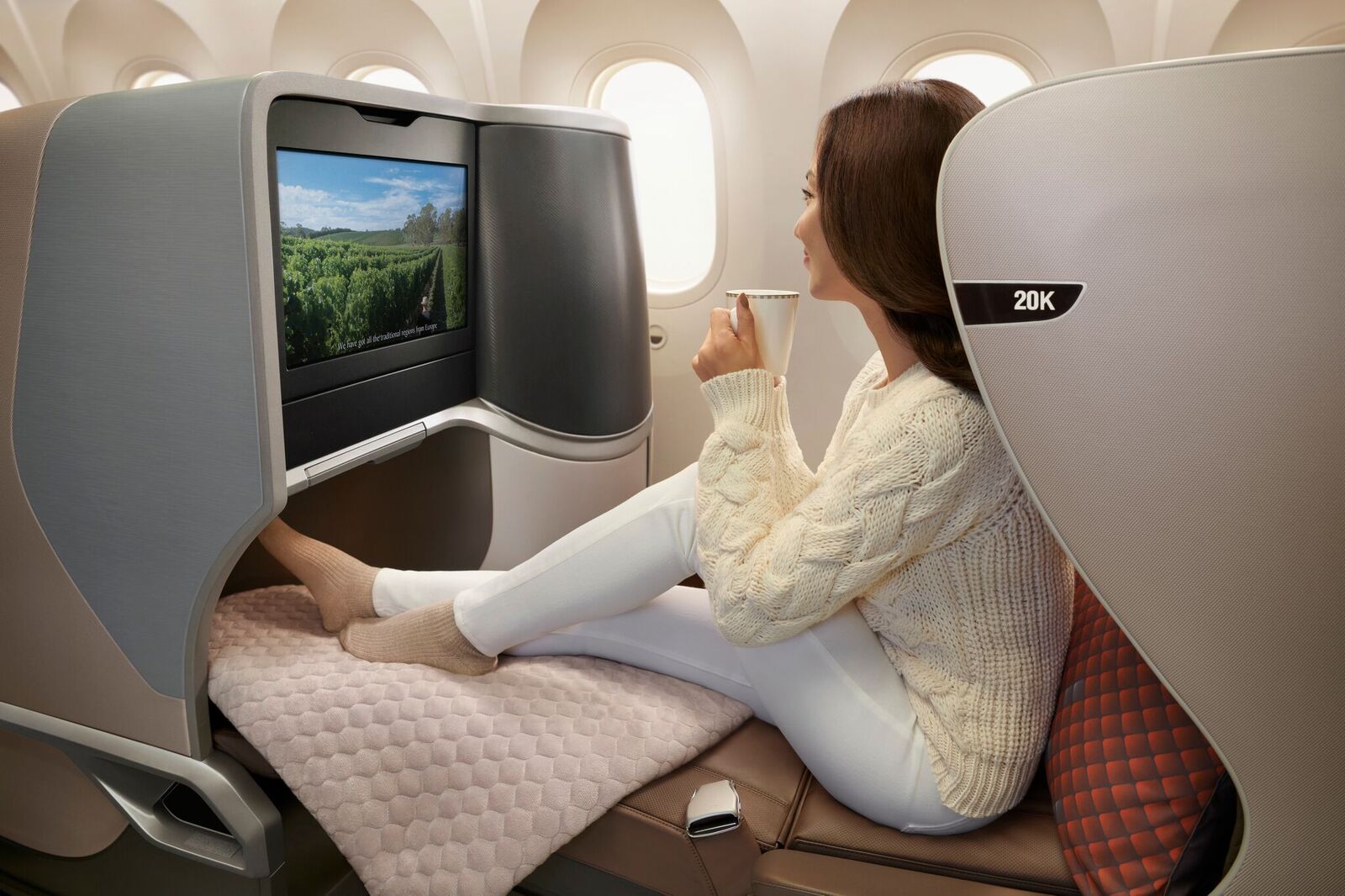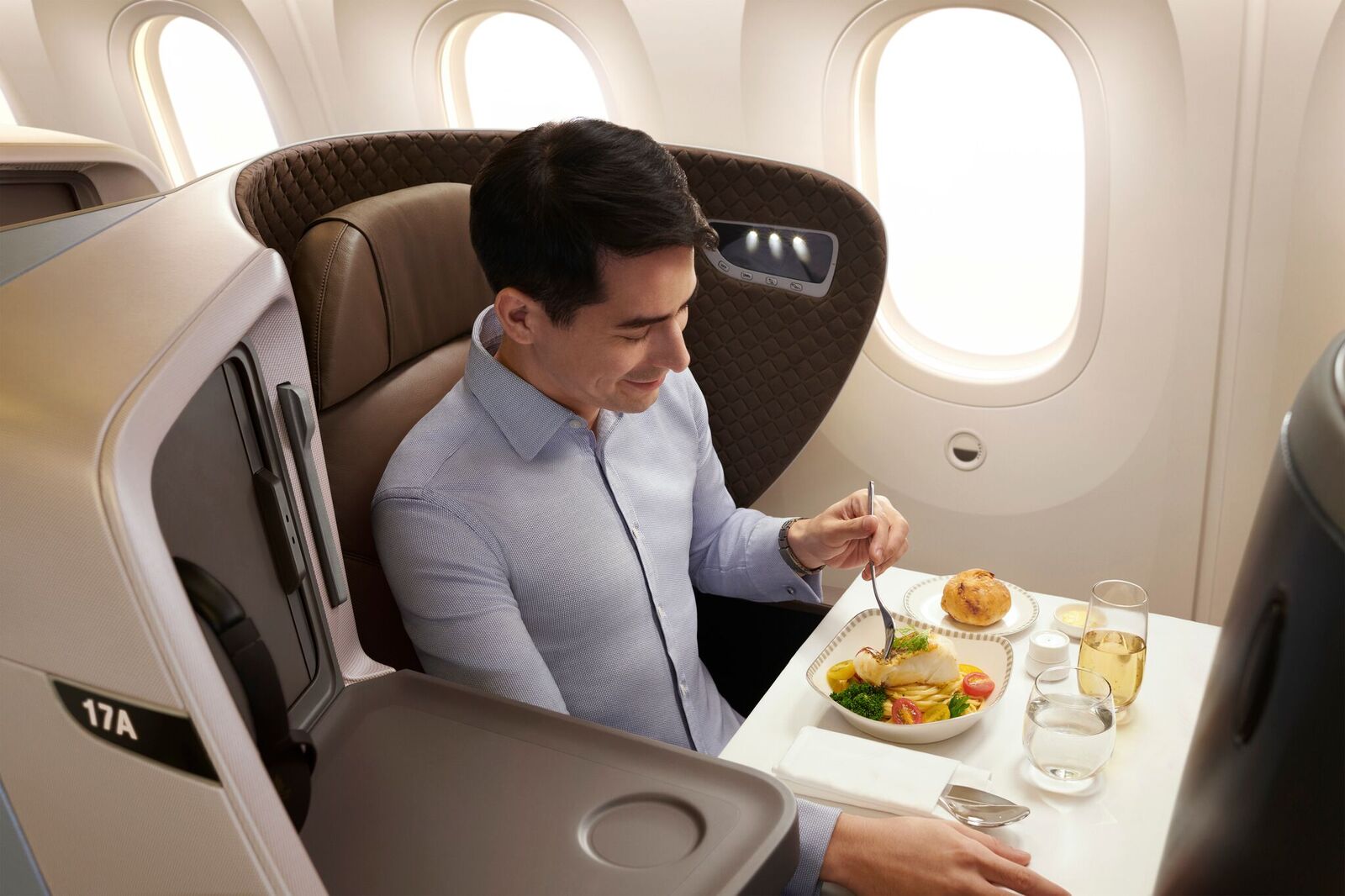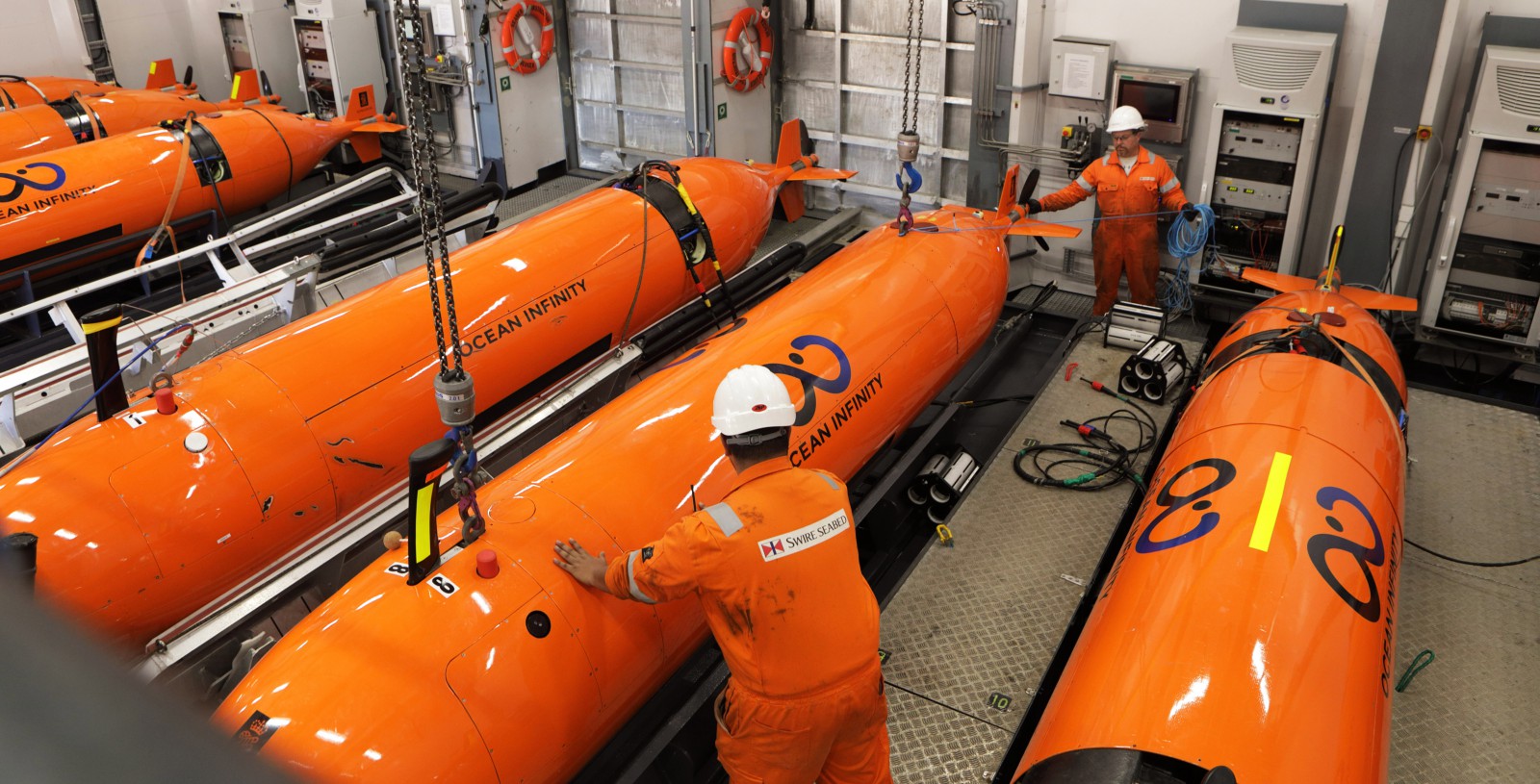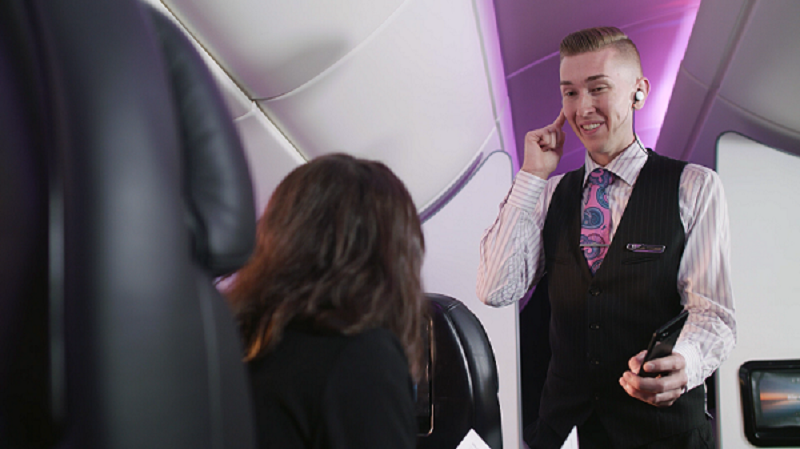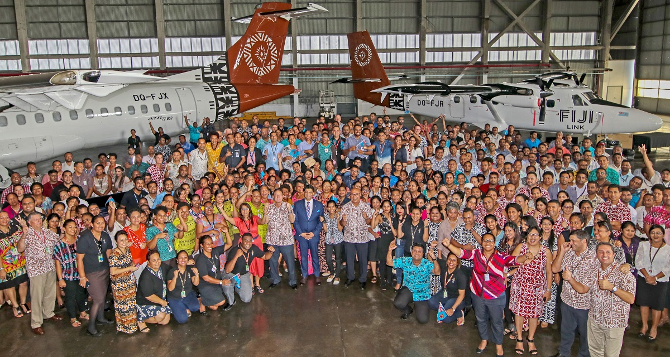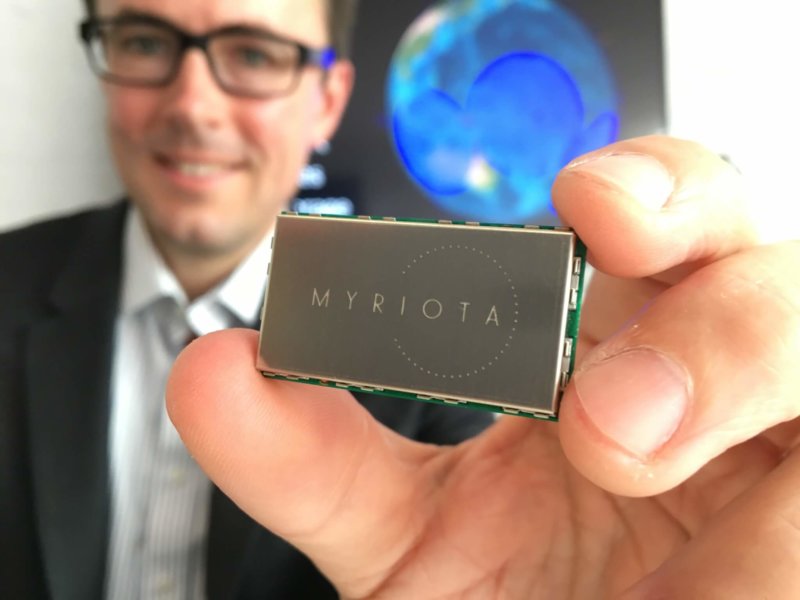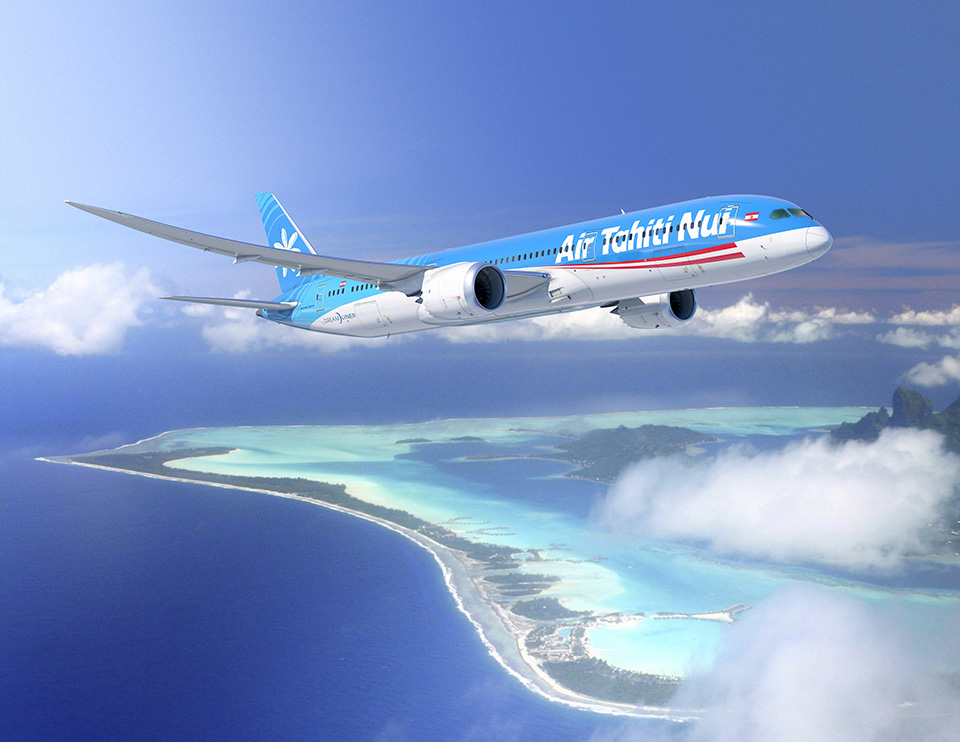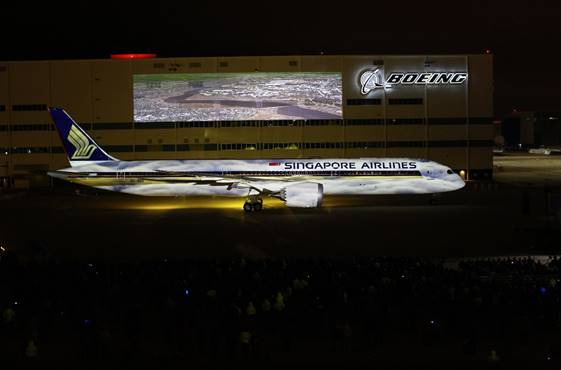Slick leather seats bound in the same plush suede-look fabric used in Lamborghinis, cinematic screens and a cosseting lie-flat bed with retractable arm rests are just some of the boastworthy features of Singapore Airlines’ new regional business class.
The new cabin products debuted in the airline’s first Boeing 787-10 Dreamliner, which returned home to an exciting ceremony at Changi airport this morning.
READ: Singapore takes delivery of the first Boeing 787-10.
The first-ever ‘dash 10’ is the first of 49 on order by Singapore Airlines. The newest member of the Dreamliner family will begin servicing the Perth-Singapore and Perth-Osaka routes in May.
Business class in the 787-10 cabin is a private and luxurious affair, with 26in-wide seats set in the popular 1-2-1 configuration, all forward facing.
Each seat converts into a 76in fully-flat bed and has a handy console, with a power point and two USB ports. There is also a pull-out vanity mirror and in a big improvement on the 777, a touchscreen monitor with intuitive remote.

Given Singapore Airlines’ existing business class seats are sofa-sized behemoths that can easily fit two people seated side by side, it’s impossible not to be struck by the narrower new ones.
But they are a very clever use of space, and feel surprisingly spacious when flattened out (they’re also particularly cosy when you wrap yourself in the soft faux-mink rug and brush up against tactile brown microfibre fabric made by Alcantara — the same suedette used in sports cars and luxury yachts).
They’re obviously not made for long-haul flights and perfectly suit the dine and nap nature of the medium haul regional flight.
That said, they provided a rather effective lullaby for passengers on board the 20+ hour delivery flight (this reporter managed to squeeze in a very impressive nine-hour snooze).
In the upright position, the seats are the very epitome of business class in that they provide a brilliant situation for working travellers: the big tray table is more than able to hold a laptop while the smaller table in the console area could easily hold a meal and drinks — or vice versa. This means no awkward scrambling when service begins.
The crystal-clear screen is almost 18-inches wide and enormous selection of movies (this reporter has now just about seen every winner from the recent Academy Awards) and the ability to log on with your KrisWorld number to save your spot or create favourites, significantly enhance the inflight experience.
In economy class, the new cabin has a 3-3-3 configuration, with firm and supportive racing car-style Recaro seats with a 32in pitch. Each seat features a six-way adjustable headrest with wings for head and neck support, plus storage space and a charger port.

And Cabin altitude is kept at what Jeff Haber, regional director of product marketing for Boeing Commercial Airplanes, said is an “optimal” 6000ft during cruise to stave off headaches and fatigue.
Cynical journalists are always pretty keen to avoid falling for the hype but the almost 24-hour journey from Charleston to Changi via Osaka did not end with the usual cracked lips, arid sinus and pressure headache. Flight attendants also claim the humidified air is saving their skin.
Mr Haber said the “game changer” of an aircraft boasted several improvements: a combination of “things you can see and things you can feel”.
Among the things you can see is plentiful overhead storage — “so people can be near their stuff”.
The Dreamliner’s huge dimmable windows are also a big drawcard. “When you’re on a Dreamliner, every seat is a window seat,” he said. “Every seat is connected to the sky”.
The 787-10 is effectively a stretched version of its predecessor, with the extra 18ft boosting capacity to 337 seats. Vitally, there is also 13 per cent more cargo space.
It was assembled at Boeing’s Charleston, South Carolina facility using parts manufactured around the world — including trailing edge wing flaps from Fishermans Bend in Melbourne.
The airline has invested $US350million on installing the new regional cabin products in the first 20 of its 787-10s.
Amanda Keenan traveled to the US as a guest of Singapore Airlines.















